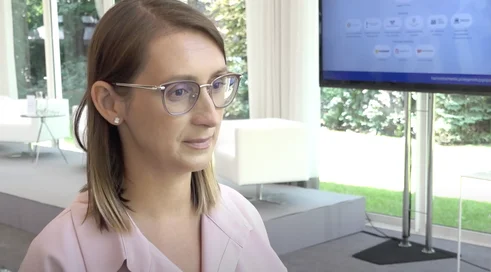You probably know the most famous man in the world who suffered from ALS. That's astrophysicist Stephen Hawking - the one "from black holes," whose amyotrophic lateral sclerosis confined him to a wheelchair for most of his life and caused the scientist to communicate with loved ones and colleagues exclusively through a speech synthesizer.
ALS (for amyotrophic lateral sclerosis) is a rare, debilitating and rapidly progressive disease. Like Alzheimer's and Parkinson's, it belongs to the group of neurodegenerative diseases. Damage and loss of motor neurons, known as motoneurons, occur in the brain and spinal cord of those affected.
The average life expectancy with ALS is 3 to 5 years from the first symptoms of the disease. The main cause of death is respiratory failure.
- This is one of the most difficult diseases for a person. It takes away the ability to communicate, express one's needs and stand up for oneself. The patient cannot move his arms and legs, but has no sensory or memory impairment. He remains himself and is intellectually functional. Such people often struggle with the so-called locked-in syndrome. Trapped in their own body, they can only communicate with the environment using eye movements," says Professor Magdalena Kuźma-Kozakiewicz of the Neurodegenerative Diseases Research Team of the Department of Neurology at the Medical University of Warsaw.
This black scenario has a chance of not coming true in some cases. For patients with mutations in the SOD1 gene, a chance to stop the disease has emerged. It is tofersen - the first molecularly targeted therapy for the treatment of SOD1-ALS registered in the EU, on May 29, 2024. - This is a real breakthrough," says Prof. Magdalena Kuzma-Kozakiewicz.
The onset of ALS is insidious
The first symptoms sometimes vary. One person can't hit the lock with a key and has trouble unscrewing a bottle, while another can't hold a phone or mug in his hands and becomes "awkward." Someone else begins to speak more slowly, unintelligible to those around him. He finds it increasingly difficult to swallow food, and sometimes even saliva, and can choke on it. In the case of Monika Partyka, an insurance consultant, the disease began with trouble walking.
Vacation 2019. Monica walks in flip-flops, her husband notices that she "somehow puts her feet strangely." He tells her about it.
- I brushed him off. I concluded that he was exaggerating and it only seemed to him, but I felt that there was something wrong with my left leg," Monica recalls. Then there was a friend's wedding. She danced, and on her feet this time she had stilettos. - At one point my left leg literally "flew", I did not control it," she recounts.
- Shortly thereafter, I was with my son at the pediatrician for a so-called balance sheet of a three-year-old. I asked the doctor why this foot was drooping when I tried to stand on my toes. He advised a visit to an orthopedist," she recalls.
This time she no longer downplayed the symptoms, as she did when she was on vacation. She struggled with fear, muscle pain, and the soaring cramps kept her awake. She began a long trek in search of a diagnosis.
- I circulated between an ort...
Content locked
To gain access to the complete English section of the Medexpress.pl, kindly reach out to us at english@medexpress.pl.

















